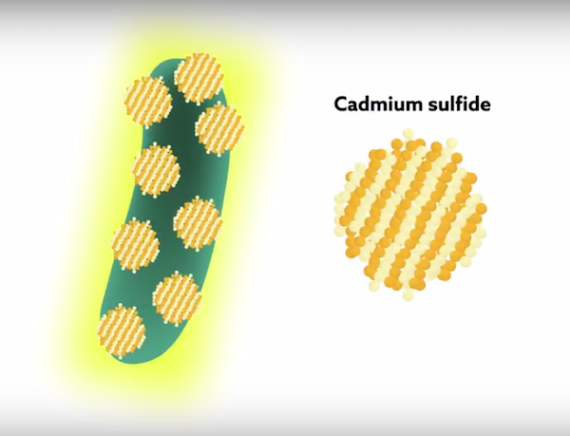‘Cyborg’ bacteria deliver green fuel source from sunlight
‘Cyborg’ bacteria deliver green fuel source from sunlight: Scientists have created bacteria covered in tiny semiconductors that generate a potential fuel source from sunlight, carbon dioxide and water. The so-called “cyborg” bugs produce acetic acid, a chemical that can then be turned into fuel and plastic.
In lab experiments, the bacteria proved much more efficient at harvesting sunlight than plants.
The work was presented at the American Chemical Society meeting in Washington.
Researchers have been attempting to artificially replicate photosynthesis for many years.
In nature, the green pigment chlorophyll is key to this process, helping plants to convert carbon dioxide and water, using sunlight, into oxygen and glucose.
But despite the fact that it works, scientists say the process is relatively inefficient. This has also been a big problem with most of the artificial systems developed to date.
This new approach seeks to improve that efficiency by essentially aiming to equip bacteria with solar panels.
After combing through old microbiology literature, researchers realised that some bugs have a natural defence to cadmium, mercury or lead that lets them turn the heavy metal into a sulphide which the bacteria express as a tiny, crystal semiconductor on their surfaces.
“It’s shamefully simple, we’ve harnessed a natural ability of these bacteria that had never been looked at through this lens,” said Dr Kelsey Sakimoto from Harvard University in Massachusetts, US.
“We grow them and we introduce a small amount of cadmium, and naturally they produce cadmium sulphide crystals which then agglomerate on the outsides of their bodies.”
“You grow them in their liquid broth and you just add small aliquots of cadmium solution and you wait a couple of days and out pops these photosynthetic organisms.
“It’s all very simple, mix-in-a-pot-chemistry.”
These newly boosted bacteria produce acetic acid, essentially vinegar, from CO2, water and light. They have an efficiency of around 80%, which is four times the level of commercial solar panels, and more than six times the level of chlorophyll.
“We prize these cyborg bacteria and their ability to make acetate because they produce a substrate that we can already use to produce more valuable and more interesting products,” said Dr Sakimoto.
“We have collaborators who have a number of strands of E. coli that are genetically engineered to take acetic acid as their food source and they can upgrade it into butanol and a polymer called polyhydroxybutyrate.”
———————————————————————————————-
Watch your favorite programs, documentaries, informative packages and latest NEWS(English and Urdu).
Watch Humsub tv Live Streaming here: Humsub.tv
Read English Latest Articles and News here: Latest Pakistan News
Read Urdu Latest News and Articles here: Urdu News
———————————————————————————————-

